WATER FOR LIFE
Water Storage, How Do Plants Get Water?, How Do Plants Lose Water?
Plants are 90 percent water. They need water for photosynthesis to take place. If plants do not get enough water, photosynthesis slows down. Water also keeps a plant's leaves and stems from drooping.
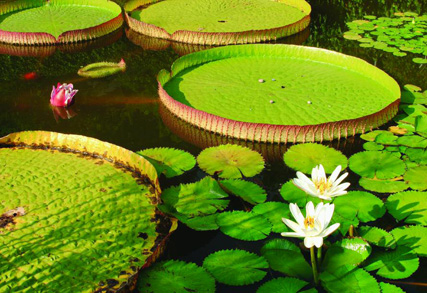 The leaves of pond plants spread out on the water's surface. The roots beneath them can get plenty of water.
The leaves of pond plants spread out on the water's surface. The roots beneath them can get plenty of water.
Water Storage
Plants store water in sacs, called vacuoles, in their cells. When the vacuole is full of water, the cells are rigid and firm. The vacuole pushes out on the cell membrane and cell wall. The cells are said to be turgid. Sometimes, there is not much water in the vacuole. Then, the cells become soft and floppy. The vacuole no longer pushes on the cell membrane and wall. Then, cells are described as flaccid.
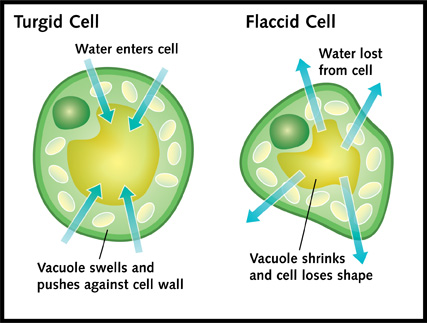 The cell on the left is from a healthy, firm leaf or stem. The cell on the right is from a soft, drooping stem or leaf.
The cell on the left is from a healthy, firm leaf or stem. The cell on the right is from a soft, drooping stem or leaf.
When the cells are turgid, the stems are strong and straight. The leaves are fully open and spread out. The leaves have a large flat area that can catch lots of sunlight. The more turgid the leaf cells, the more photosynthesis can take place.
How Do Plants Get Water?
Plants have roots. They anchor the plants in the ground. The roots are surrounded by soil. Water moves from the soil into the plants' roots. This happens by osmosis. In osmosis, water moves from an area with lots of water to an area where there is less. This usually happens across a membrane. The membrane chooses what can cross it and what can not cross it.
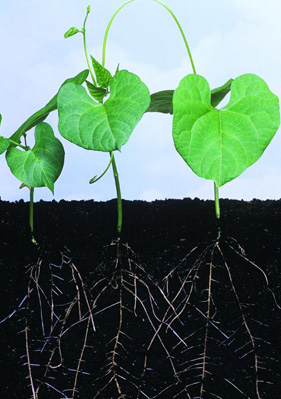 The roots of these plants spread out. This way they can reach as much water as possible.
The roots of these plants spread out. This way they can reach as much water as possible.
At the end of a plant's root is a mass of tiny root hairs. Root hairs are cells. They increase the surface area of the root. The bigger the surface area, the more water can cross into the plant.
Water travels through the roots, up the stems, and into the leaves. You can see this for yourself in this experiment. Cut the bottom off a stick of celery. Put it into a jar of water. Add food coloring to the water. Let it sit for a day. Take out the celery and cut the stem again. Look at the cut surface. You will see dots of color. That means the water is moving up the stem.
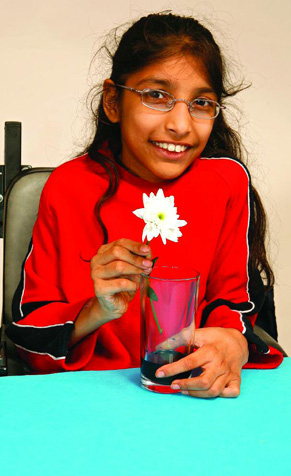
 You can try the same experiment using a white flower (above). The petals should change color (right).
You can try the same experiment using a white flower (above). The petals should change color (right).
How Do Plants Lose Water?
Plants lose water through tiny holes on the bottom of their leaves. The holes are much smaller than a pinhead. You need a microsope to see these, too. The holes are called stomata. Water vapor moves out of the leaves through the stomata. This is called evaporation.
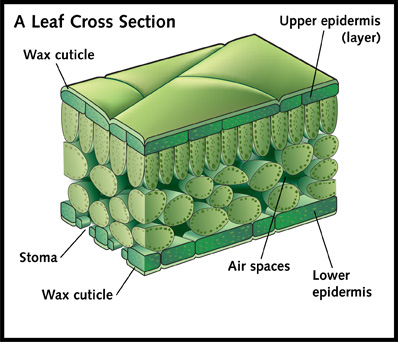 The wax cuticle stops water from leaving the plant, except through the stomata.
The wax cuticle stops water from leaving the plant, except through the stomata.
Plants open the stomata to let in carbon dioxide for photosynthesis. At the same time, water moves out.
Weather conditions affect how much water plants lose. For example, a plant will lose more water in a hot desert than it would at the North Pole.
| Weather Condition | Water Loss | Why? |
|---|---|---|
| Hot day | More water loss | Heat makes water evaporate faster. |
| Cold day | Less water loss | Less heat means less evaporation. |
| Windy day | More water loss | Wind blows evaporated water from the plant. This allows more water to evaporate. |
| Calm day | Less water loss | Less wind means that evaporated water stays near the plant. This stops more water from evaporating. |
| Low humidity (air containing less water vapor) | More water loss | Air with low humidity does not hold much water. There is plenty of space for extra water to evaporate from the plant. |
| High humidity (air containing more water vapor) | Less water loss | Humid air is full of water. This stops more water from evaporating. |
A LOT OF WATER
In a year, an oak tree can lose 40,000 gallons (151,000 liters) of water from its leaves. This is a lot of water. Imagine this. You would use the same amount of water if you stood in a shower for almost a week.
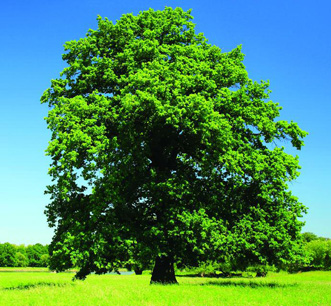
Additional topics
- SOIL FOR LIFE - Nitrates, Phosphorus, Potassium, How Do Plants Obtain Minerals?, Helping Soil and Plants
- GETTING STARTED - What is Photosynthesis?, Where Does Photosynthesis Happen?, Plant Cells, Respiration, Starch, Why Do Plants Need Energy?
- Other Free Encyclopedias